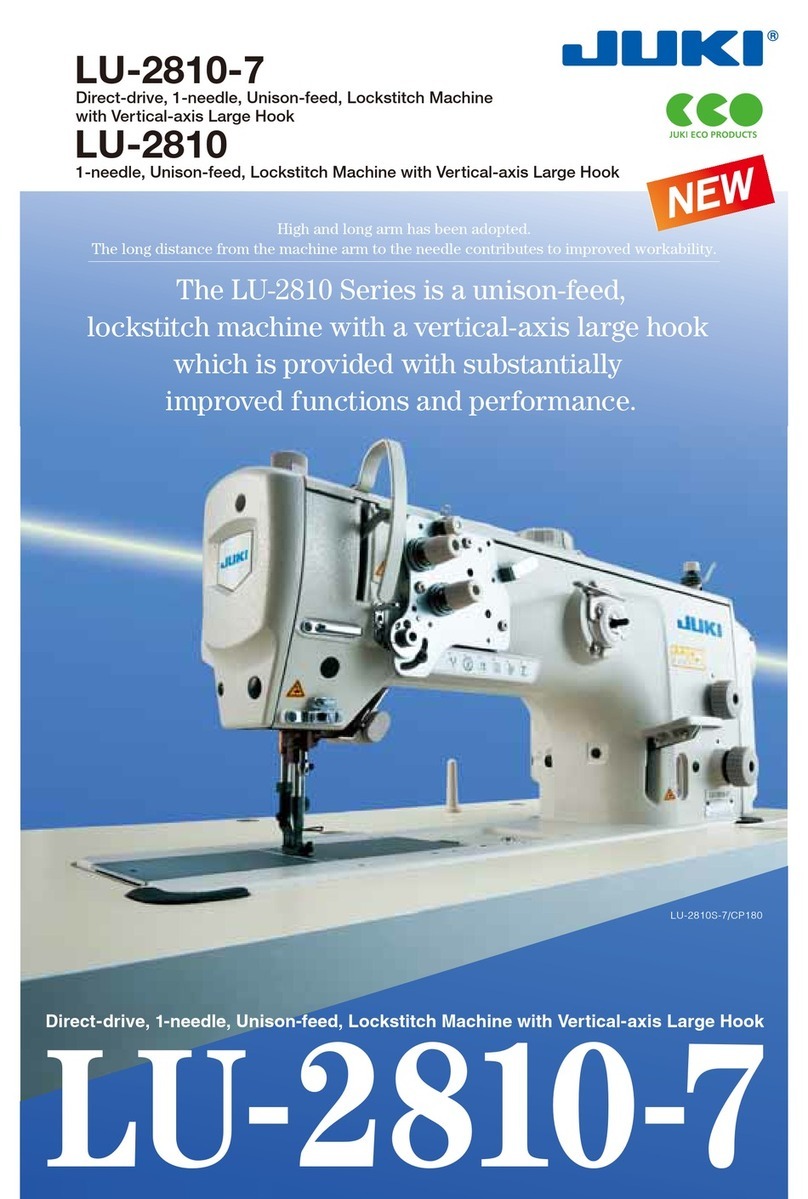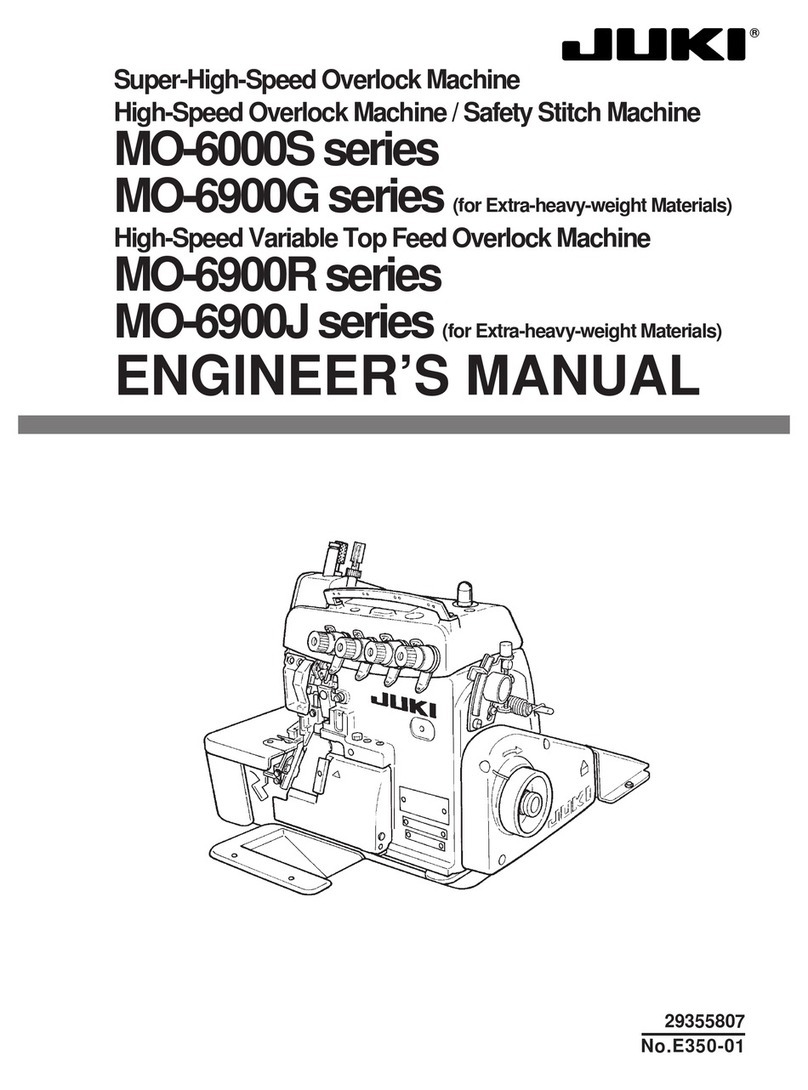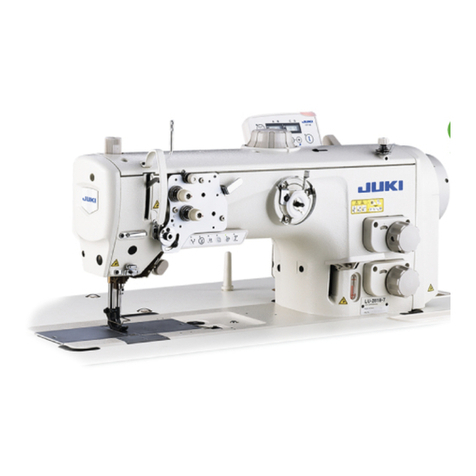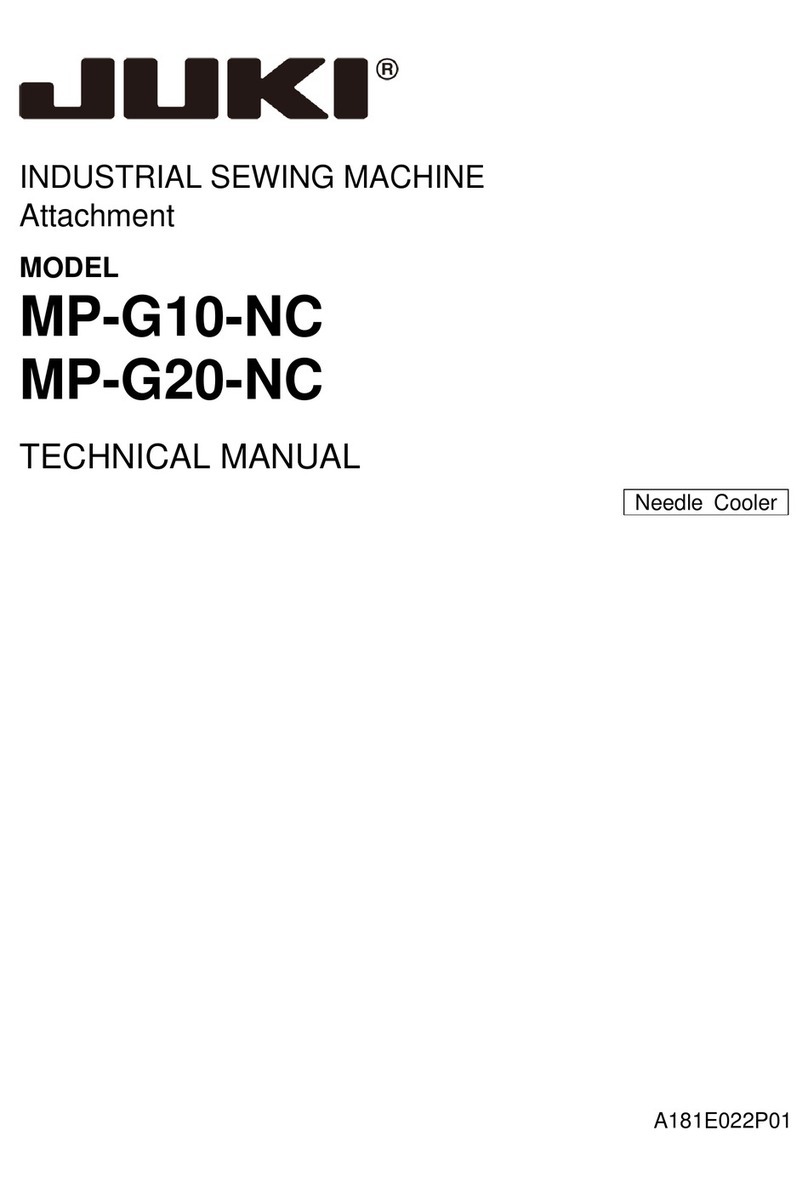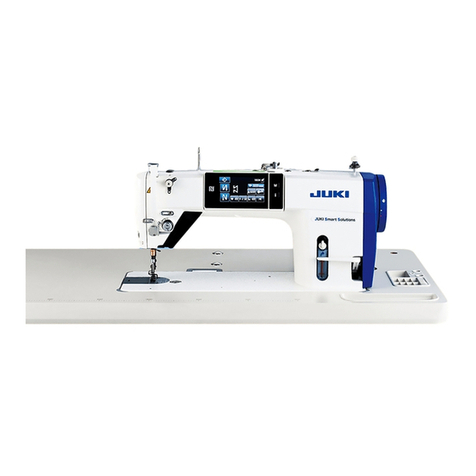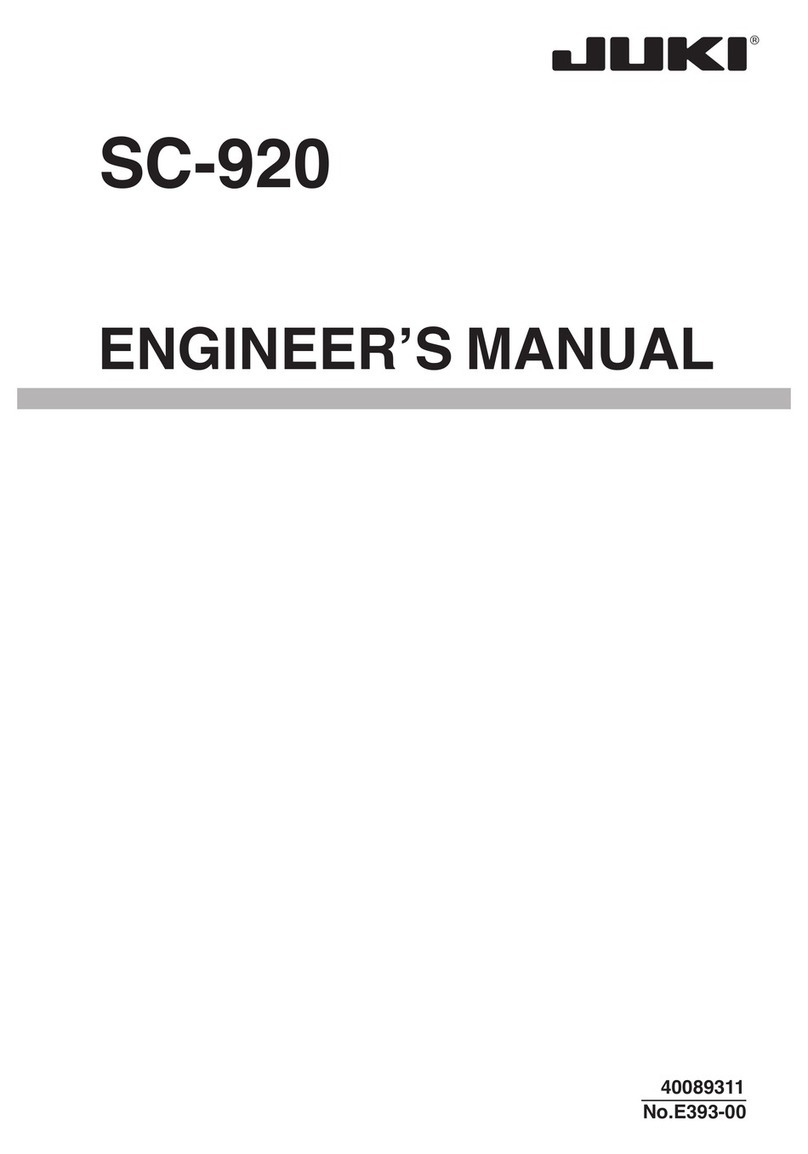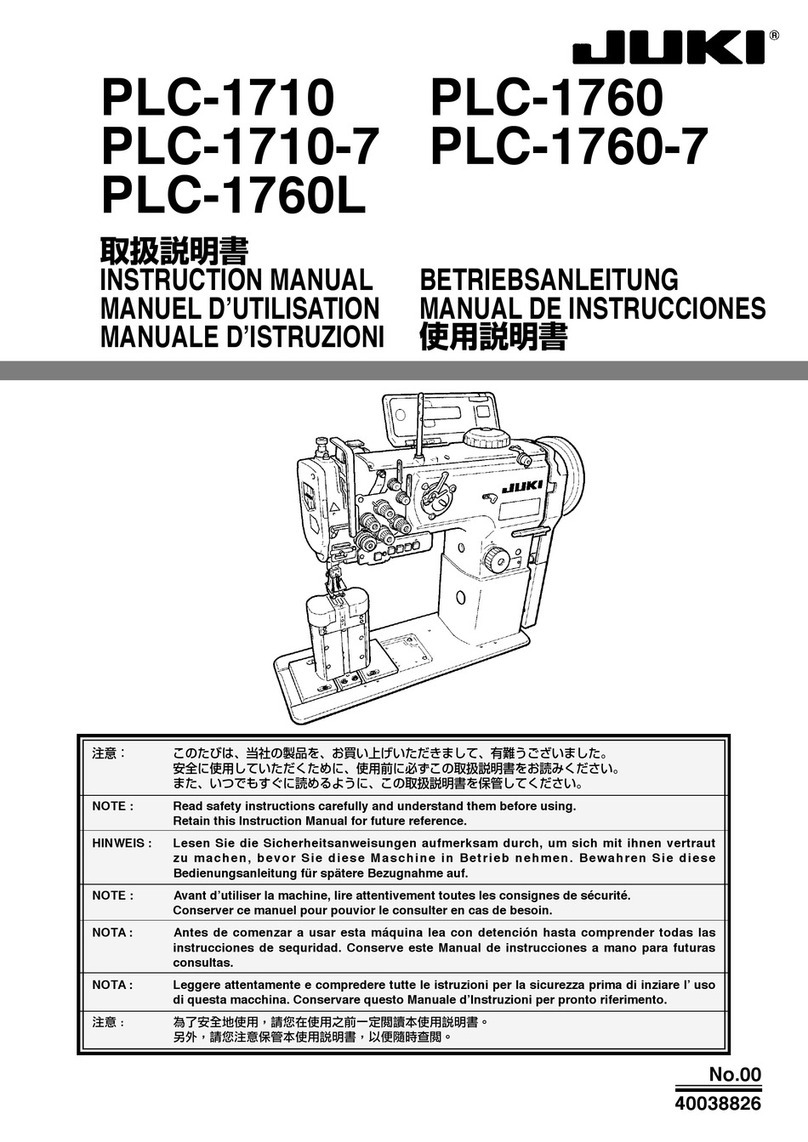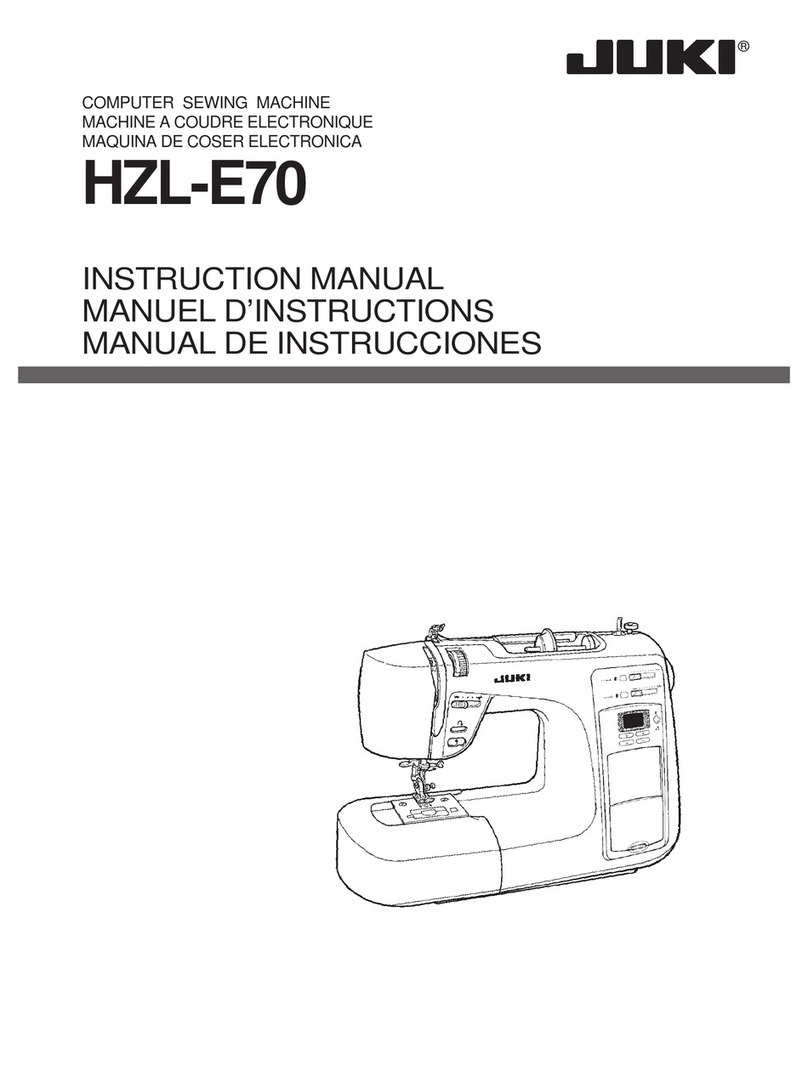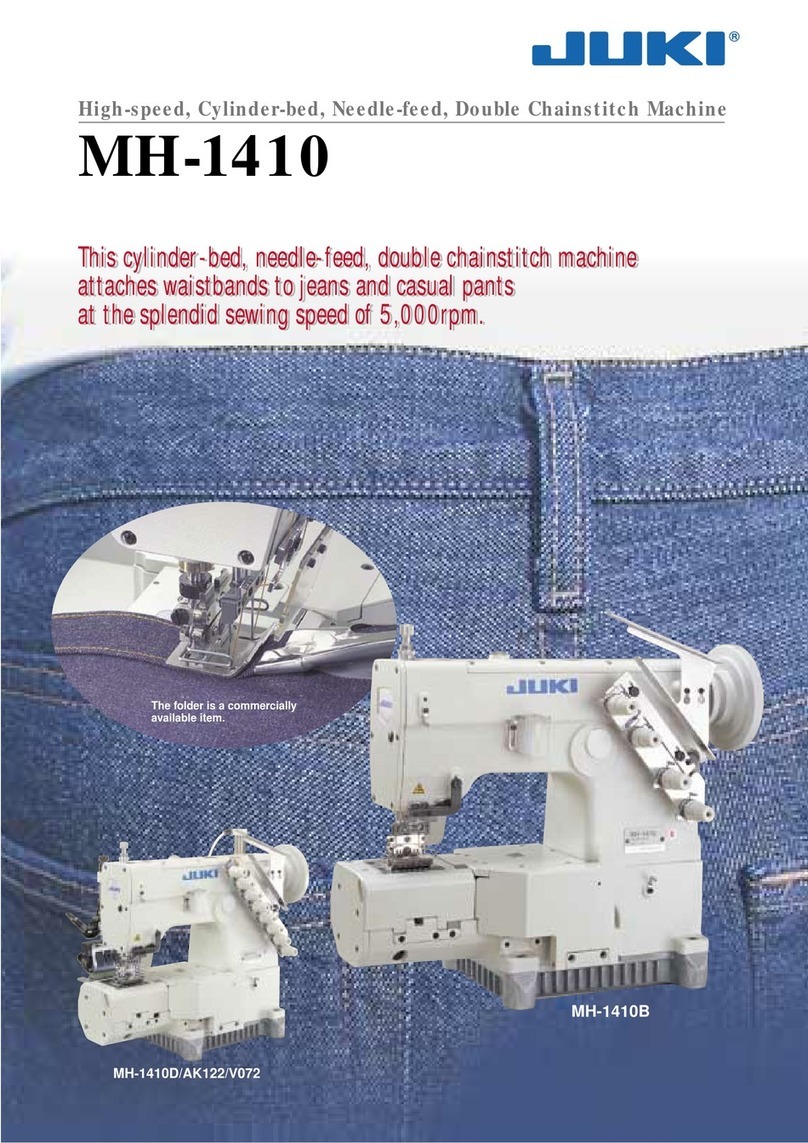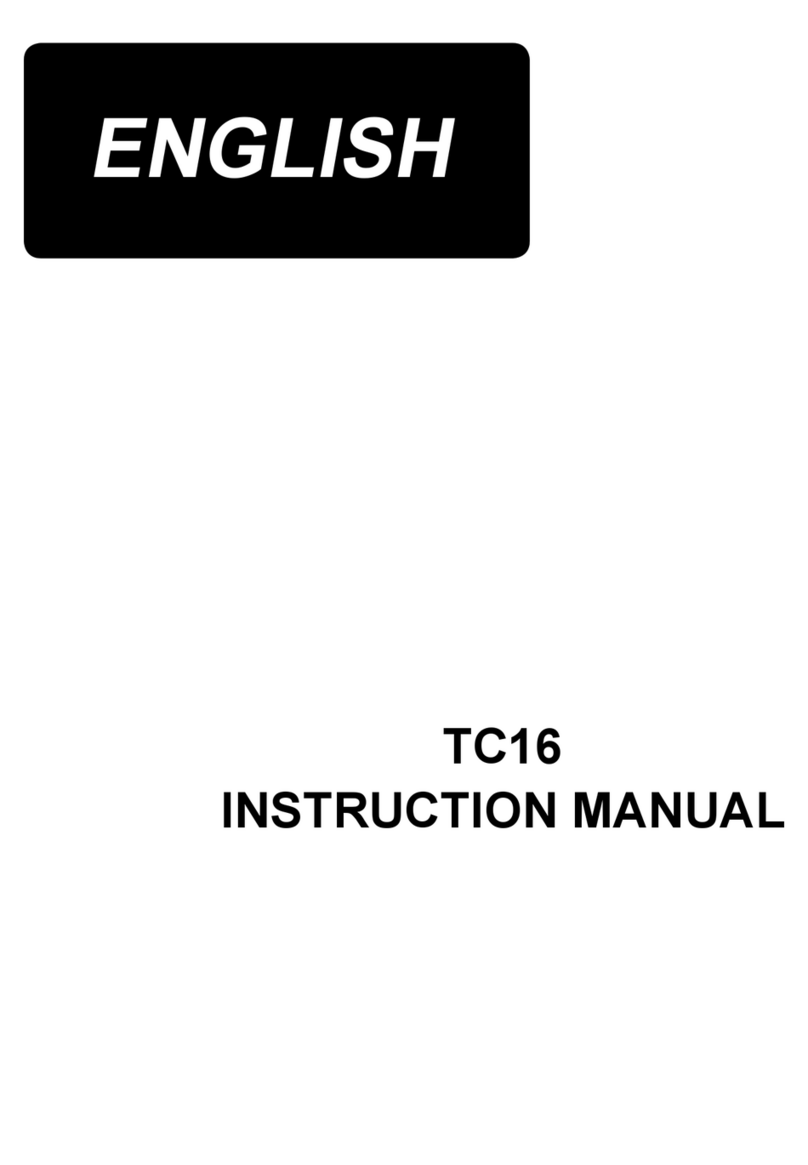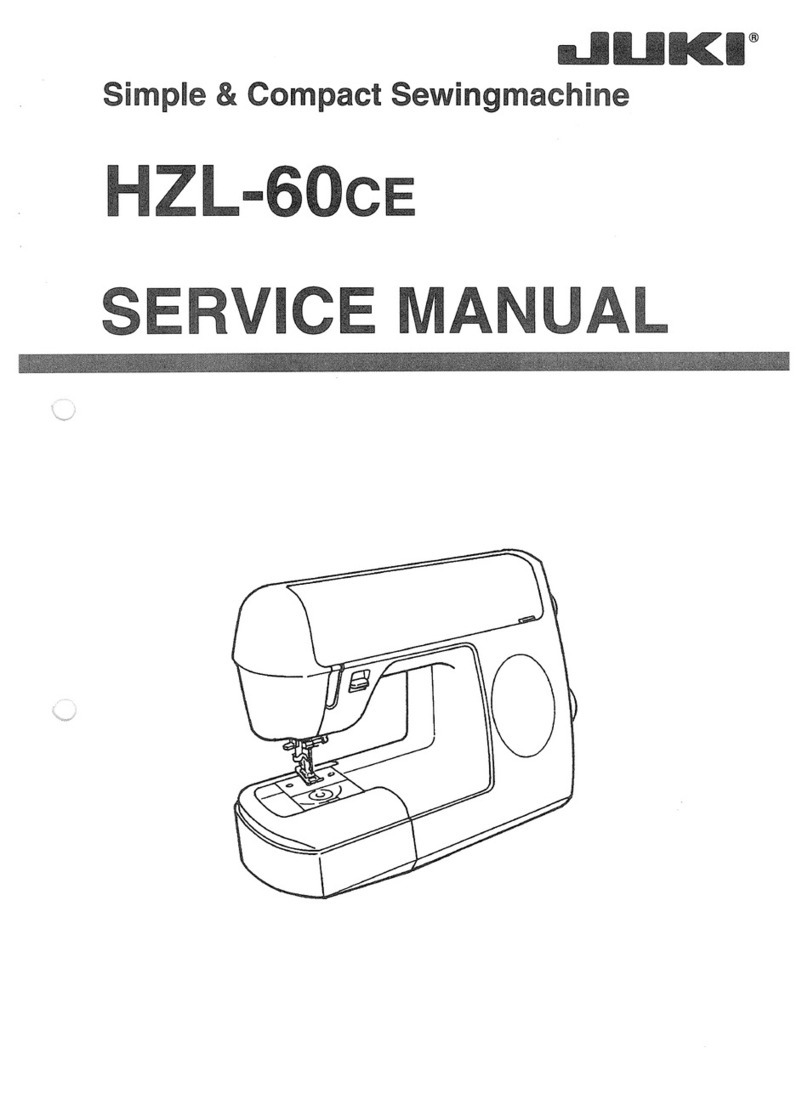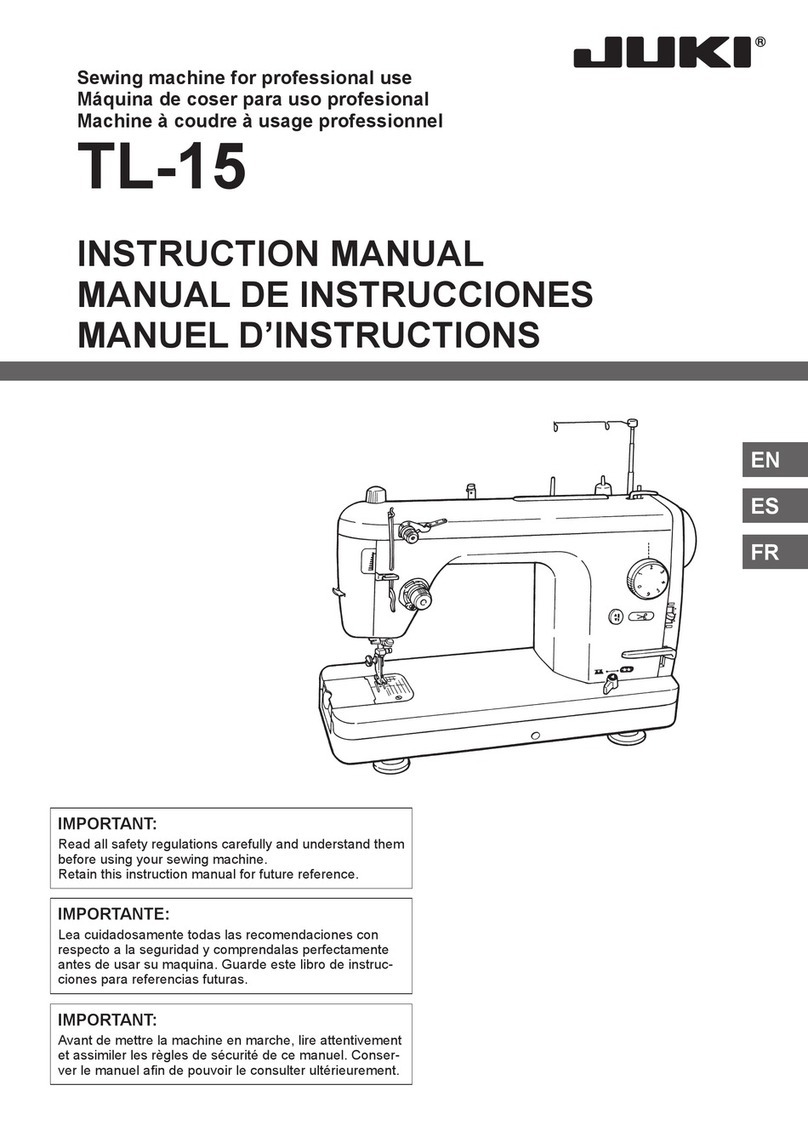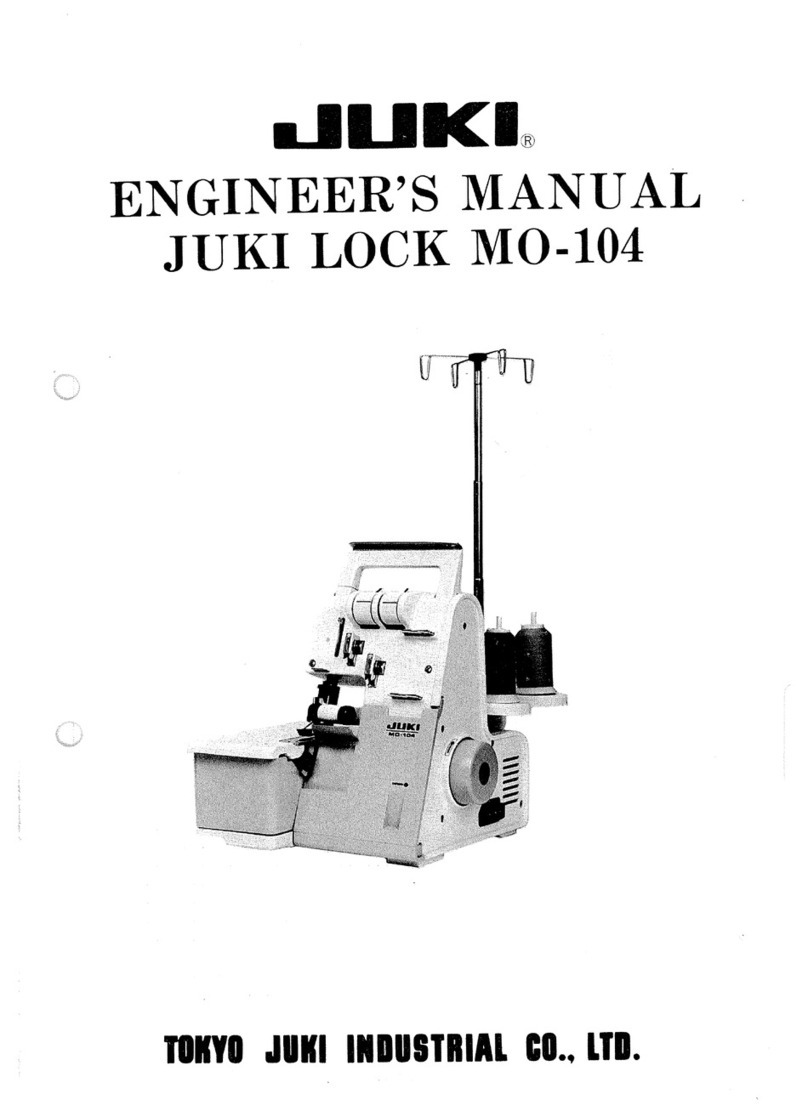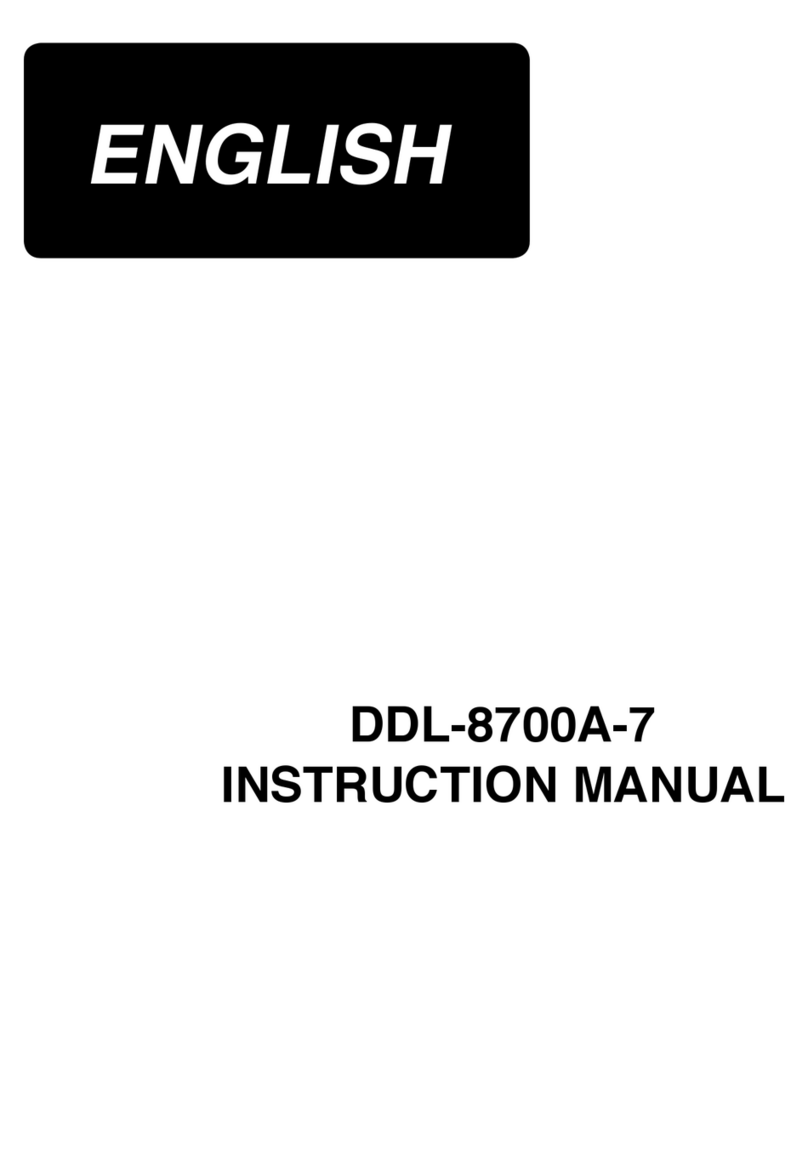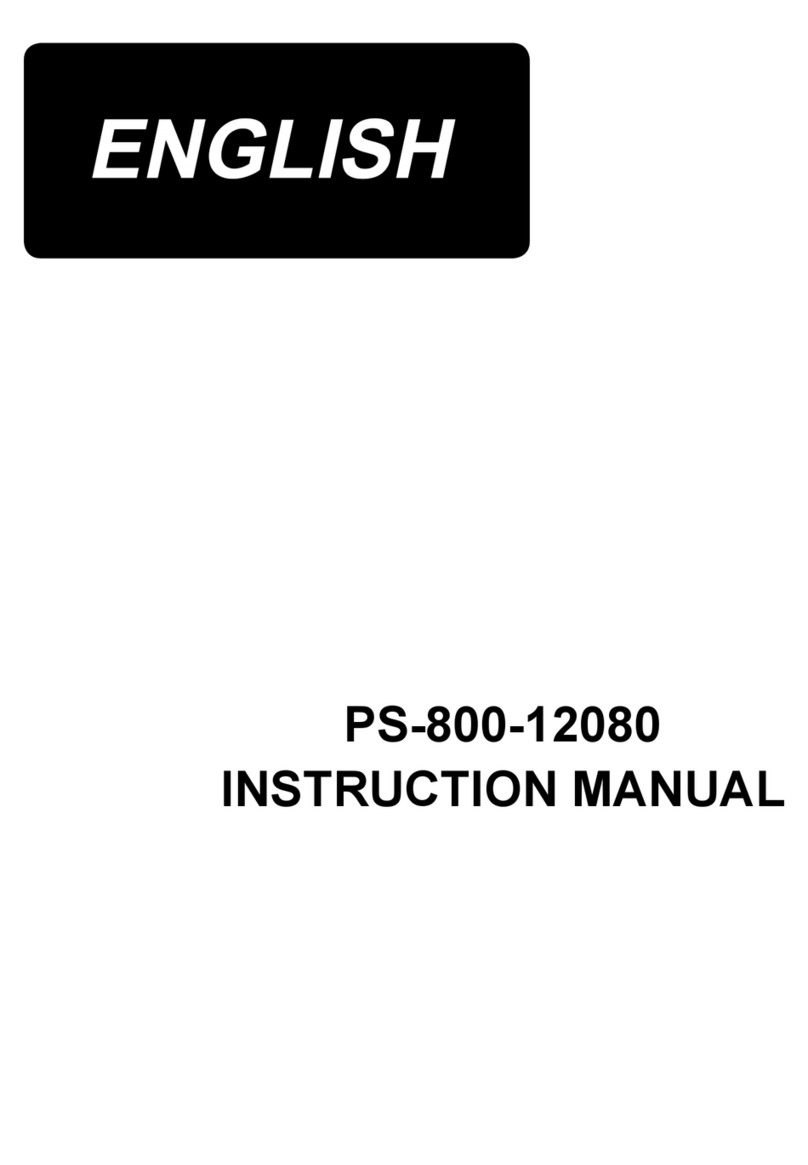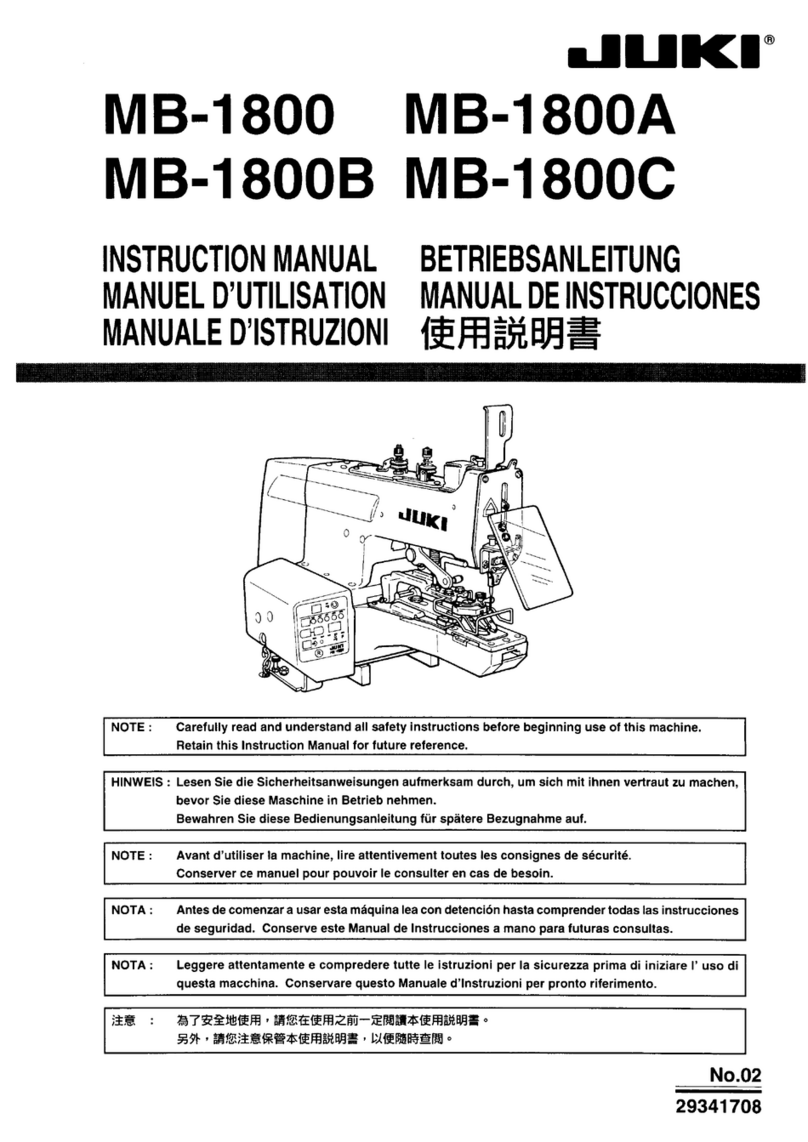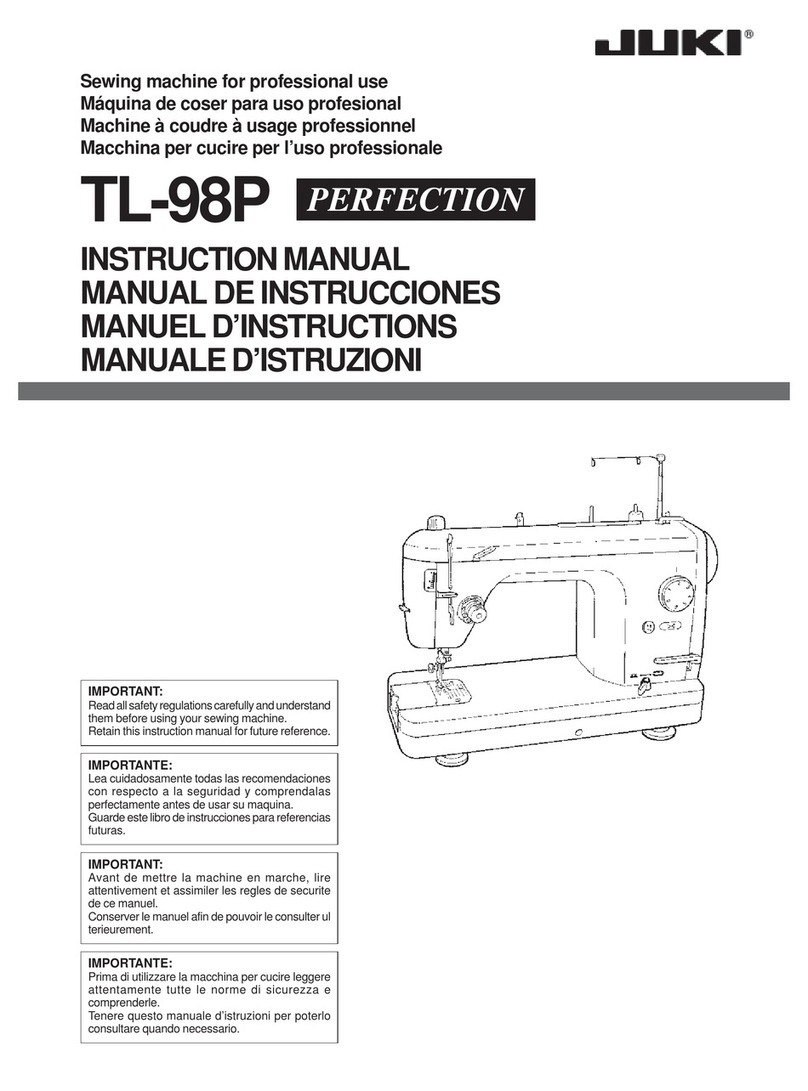
iii
8-3. Adjusting the hook needle guard............................................................................................97
8-4. Adjusting the bobbin case opening lever ..............................................................................97
8-5. Adjusting the position of counter knife, knife pressure and clamp pressure ....................98
8-6. Adjusting the thread trimming cam timing ............................................................................99
8-7. Adjusting the thread clamp device .......................................................................................100
8-8. Active-presser multi-layered section detection function ...................................................103
8-8-1. Multi-layered section detection function........................................................................ 103
8-8-2. Turning OFF the multi-layered section changeover function by the number of
stitching ..............................................................................................................................106
8-9. Grease shortage alarm ..........................................................................................................108
8-9-1. Regarding the grease shortage alarm ............................................................................ 108
8-9-2. E221 Grease-shortage error ............................................................................................ 108
8-9-3. Regarding K118 error resetting procedure .................................................................... 109
9. HOW TO USE THE OPERATION PANEL (APPLICATION)............................. 110
9-1. Management of sewing patterns...........................................................................................110
9-1-1. Creation of a new pattern................................................................................................. 110
9-1-2. Copying a pattern ............................................................................................................. 112
9-1-3. Deleting a pattern ............................................................................................................. 113
9-2. Setting up the polygonal-shape stitching............................................................................114
9-2-1. Editing a polygonal-shape stitching pattern.................................................................. 114
9-2-2. Creating a new polygonal-shape stitching pattern ....................................................... 120
9-2-3. Setting the step from which polygonal-shape stitching is started .............................. 120
9-3. Cycle pattern...........................................................................................................................121
9-3-1. Selecting the cycle pattern ..............................................................................................121
9-3-2. Editing cycle sewing data ............................................................................................... 122
9-3-3. Creating a new cycle pattern ........................................................................................... 123
9-3-4. Setting the step from which cycle sewing pattern is started ....................................... 125
9-4. Custom pitch...........................................................................................................................126
9-4-1. Selecting a custom pitch ................................................................................................. 126
9-4-2. Creating a new custom pitch...........................................................................................128
9-4-3. Custom pitch edit function ..............................................................................................131
9-4-4. Copying/deleting a custom pitch .................................................................................... 132
9-5. Condensation custom pattern...............................................................................................133
9-5-1. Selecting the condensation custom ............................................................................... 133
9-5-2. Creating a new condensation custom ............................................................................ 133
9-5-3. Condensation custom edit function ............................................................................... 136
9-5-4. Copying/deleting a condensation custom ..................................................................... 137
9-6. Simple lock of the screen ......................................................................................................138
9-7. Version information................................................................................................................138
9-8. Adjustment of brightness of the LED panel.........................................................................139
9-9. Information..............................................................................................................................140
9-9-1. Data communication ........................................................................................................ 140
9-9-2. USB ....................................................................................................................................143
9-9-3. NFC ....................................................................................................................................144
9-10. Key customization................................................................................................................145
9-10-1. Assignable data .............................................................................................................. 145
9-10-2. How to assign a function to a key................................................................................. 146
9-11. Maintenance management function....................................................................................148
10. SEWING SPEED TABLE ................................................................................152
11. TROUBLES IN SEWING AND CORRECTIVE MEASURES .......................... 153
